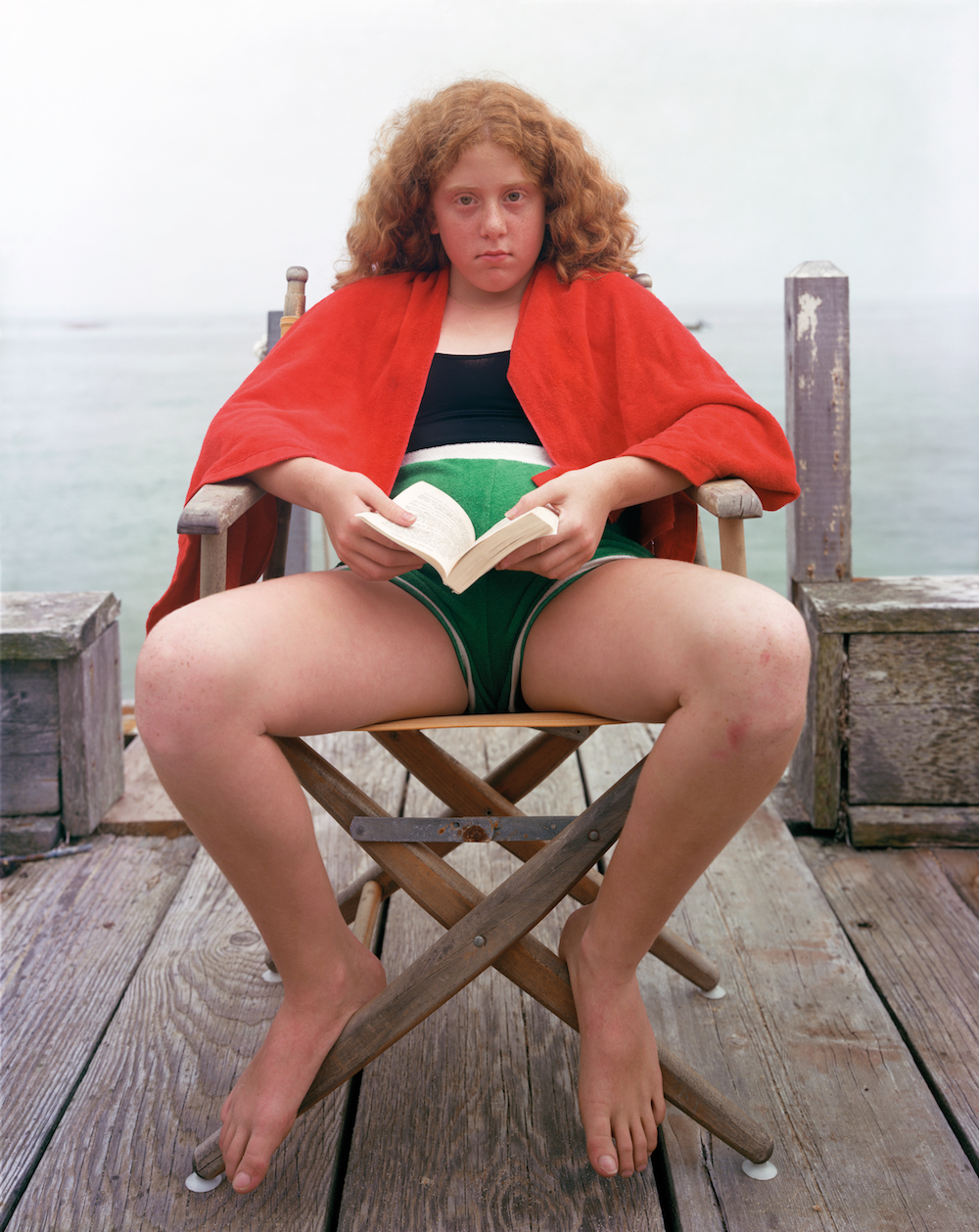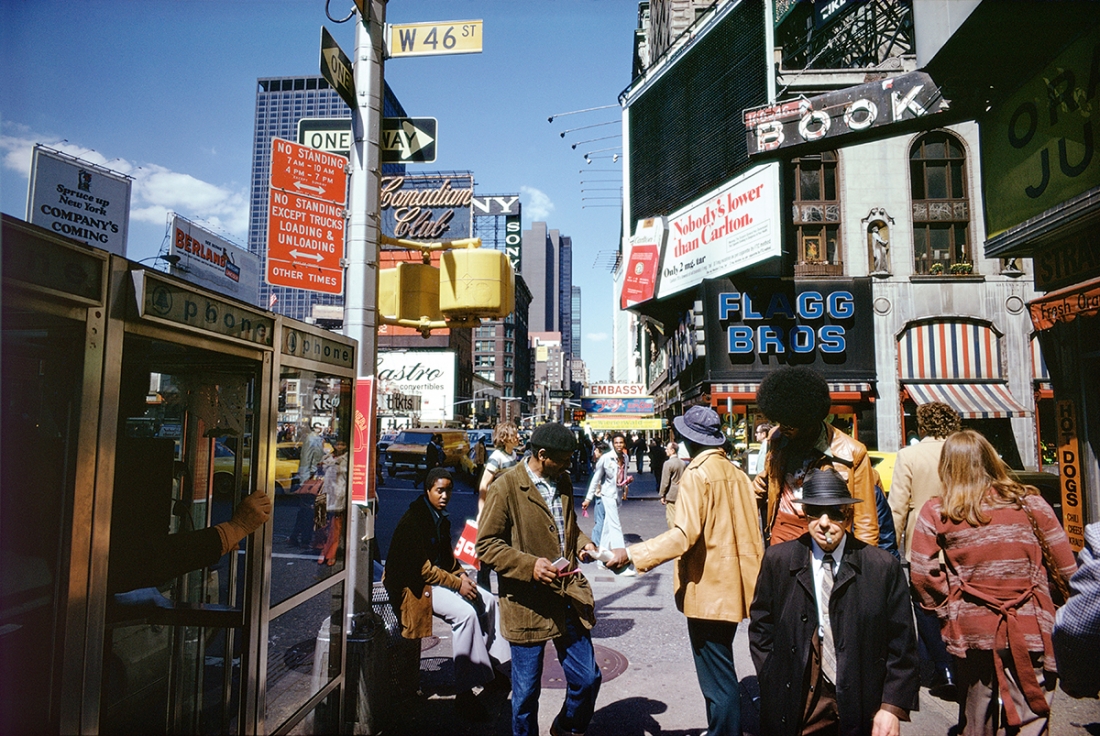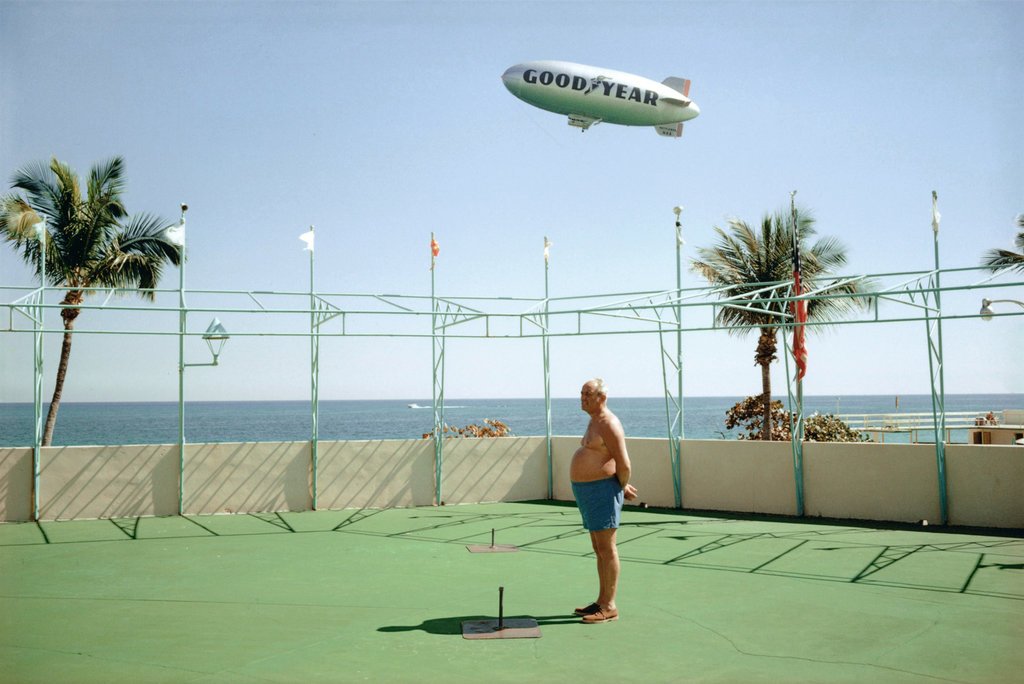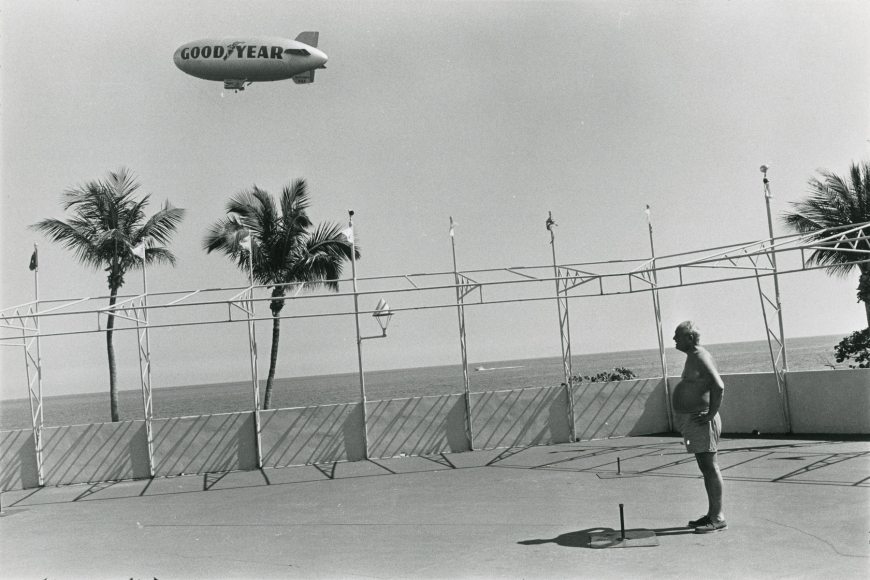
A girl sits on a foldable chair on a shabby wooden pier, shoulders draped with an orangey-red towel, a book in her hands held loosely open. Her scuffed knees are foregrounded in the photograph and she leans back in her chair in a manner that feels both stroppy and commanding as her two blue eyes stare down the lens of the camera. Daisy, Provincetown, Massachusetts (1980) has an aura that is characteristic of many works from the legendary American photographer Joel Meyerowitz, belonging, absolutely, to the great canon of American twentieth-century street and portrait photography, yet presented in a wholly unclichéd manner. In this case, we see a moment between childhood and adulthood presented without easy categorization—Meyerowitz’s sitter, Daisy, displaying an outward self-possession that belies her apparent youth without enlisting the expected costume or quirks of womanhood.

New York City, 1976
Throughout Meyerowitz’s six-decade-long career he has turned his camera on many well-photographed subjects—from the suburbs of sixties America to the terror-stricken streets of an immediately post-9/11 New York—and shown them in a fresh and human light.
Last winter the artist opened Why Color?
at C/O Berlin, including images from 1963 to 1968 in which he explores the same scenes in both black-and-white and colour film. “I was young and inexperienced and wasn’t aware that there was a nagging issue about colour in the serious world of photography,” Meyerowitz says of the period. “Colour was thought, back then, to be too commercial, or too much an amateur’s material, or too damn colourful.” In this body of work, we see the extent to which greyscale or full colour influences the final character of an image, both film types placing their scene and subject in seemingly entirely separate realms. Though it was an unpopular tack to take in the art world back then, Meyerowitz favoured the revealing power of colour. “There is a subtle union between photograph and reality,” he says, “and I lean towards the fuller description that colour brings to the subject.”
- Florida, 1967
To coincide with the show, Meyerowitz also assembled a retrospective book, Where I Find Myself, which draws on the many different periods of the artist’s career and is divided into two sections: classical and jazz. “I began as a 35mm street photographer,” the artist writes, “and later learned to work with the large-format camera. In that way I became comfortable with both vocabularies. Now I speak two languages: the more meditative, classical image-making of the 8×10, and the jazzy riff of life on the street. Street photography is jazz.”
This feature originally appeared in issue 33
BUY NOW







